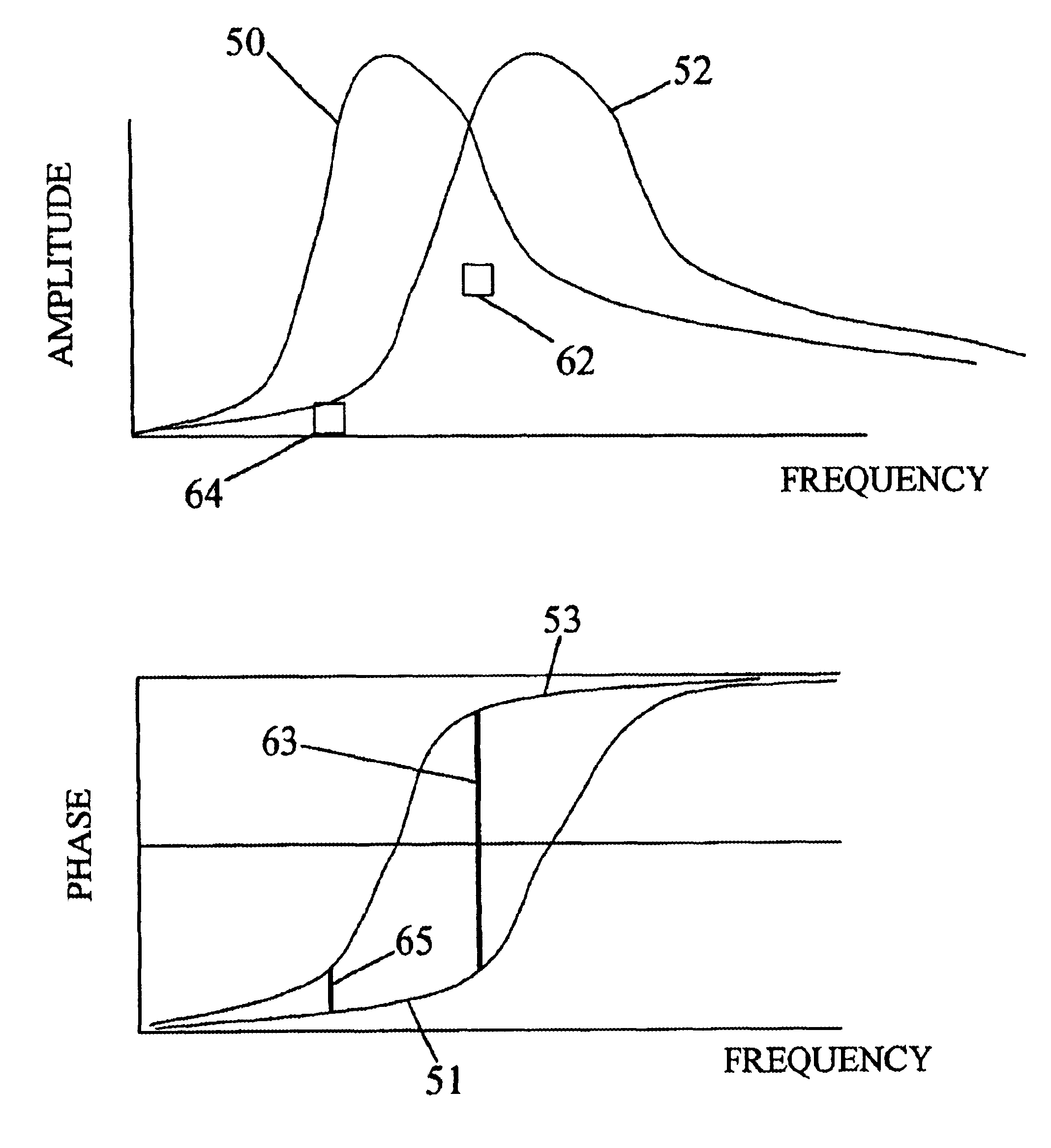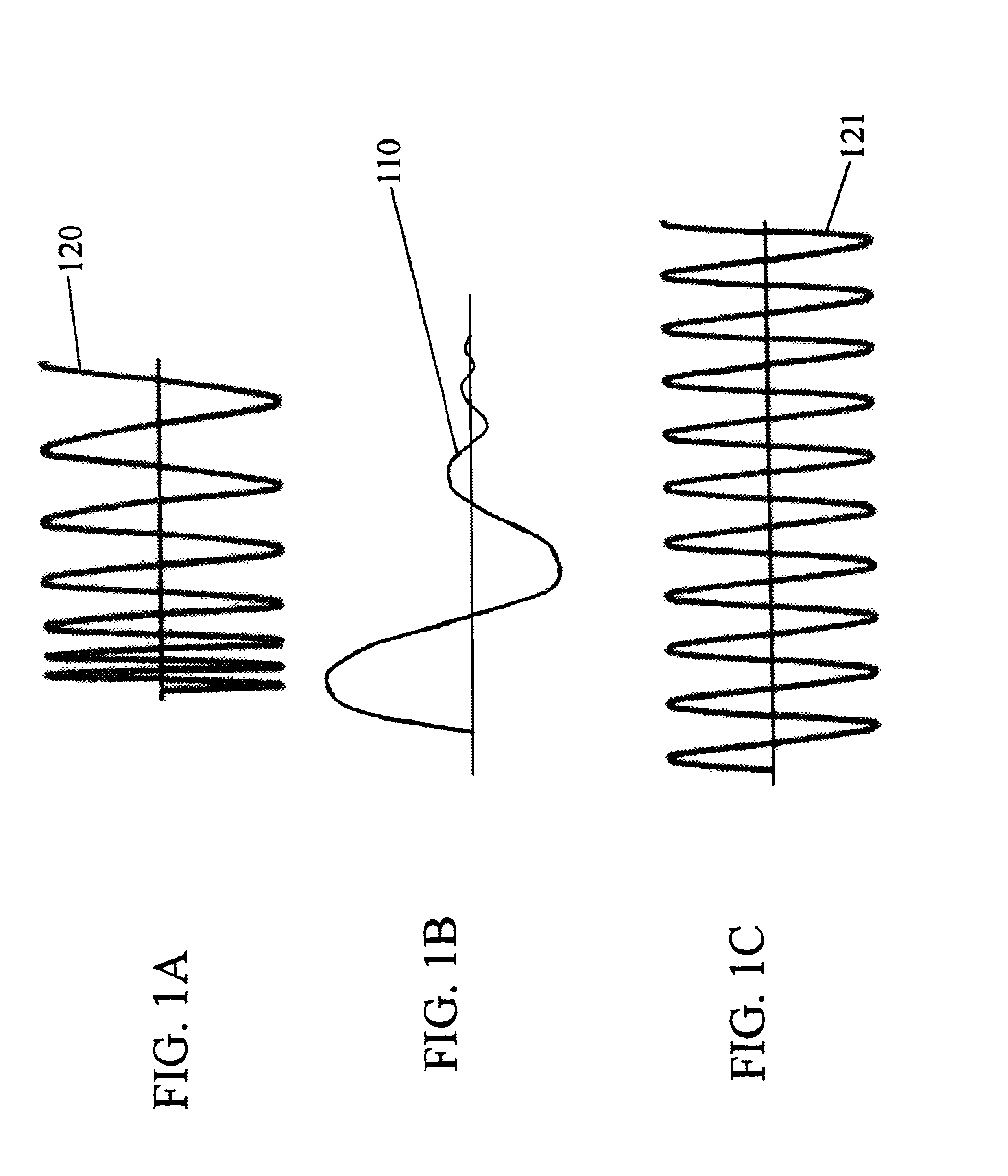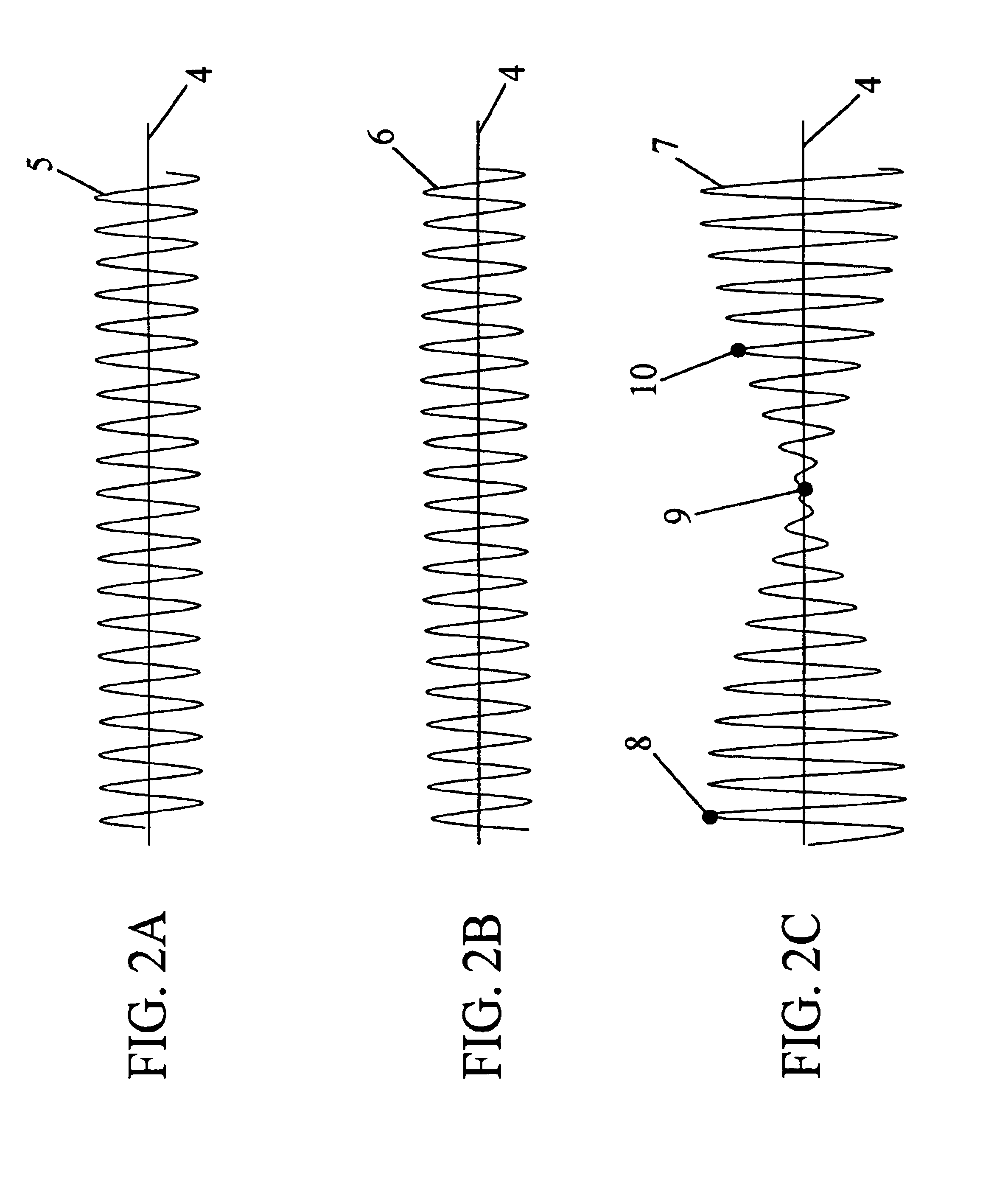Method and apparatus for interferometry, spectral analysis, and three-dimensional holographic imaging of hydrocarbon accumulations and buried objects
a technology of holographic imaging and interferometry, applied in the field of interferometry apparatus and analysis, can solve the problems of limited frequency division and isolation used in spectral decomposition and analysis of received signals, the inability to measure phase velocity of signals, and the common drawback of containing only a single broadband signal
- Summary
- Abstract
- Description
- Claims
- Application Information
AI Technical Summary
Benefits of technology
Problems solved by technology
Method used
Image
Examples
Embodiment Construction
[0043]Referring to FIGS. 1A-B and 11, signals that contain more than one frequency or wavelength are commonly used in subsea and / or subsurface surveying for the detection of buried objects including hydrocarbon accumulations. Excitation or activation of a source provides a signal that results in propagation through an earth medium 122 such as soil, rock, sea bottom, and water. The source signals may be broadband, containing more than one frequency or wavelength, or containing more than one band of frequencies or wavelengths, or they may be multiband signals. These broadband or multiple band signals may be discrete signals 110, such as explosive, weight drop or sonar pulses, whose coherence is measured by a specific time of excitation and propagation and that generally contain a band or range of frequencies. Other forms of coherent broadband or multiple band source signals are modulated signals. Examples of modulated signals include frequency or phase modulated source signals 120. A ...
PUM
 Login to View More
Login to View More Abstract
Description
Claims
Application Information
 Login to View More
Login to View More - R&D
- Intellectual Property
- Life Sciences
- Materials
- Tech Scout
- Unparalleled Data Quality
- Higher Quality Content
- 60% Fewer Hallucinations
Browse by: Latest US Patents, China's latest patents, Technical Efficacy Thesaurus, Application Domain, Technology Topic, Popular Technical Reports.
© 2025 PatSnap. All rights reserved.Legal|Privacy policy|Modern Slavery Act Transparency Statement|Sitemap|About US| Contact US: help@patsnap.com



